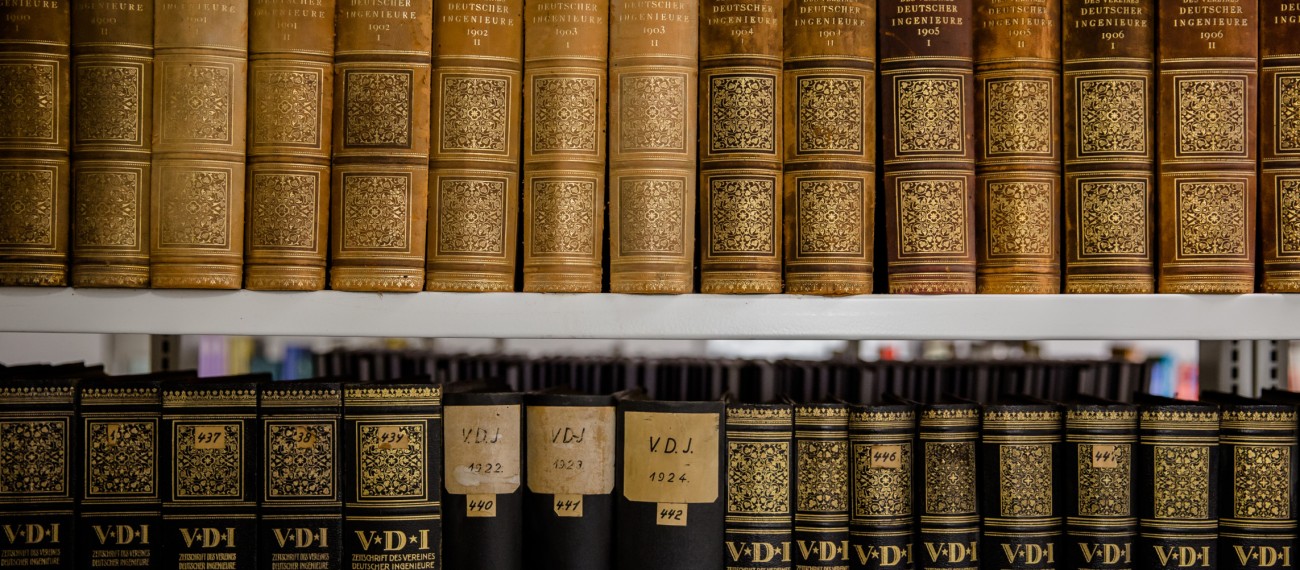| 1836 | Gründung der Höheren Gewerbeschule des Großherzogtums Hessen, bestehend aus der Chemischen und Mechanischen Fakultät |
| 1859 | Einrichtung von fünf Fachabteilungen, darunter eine Ingenieursabteilung mit den Lehrgebieten „Allgemeine Maschinenlehre' und "Mechanische Technologie“ |
| 1868 | Erhebung zur „Großherzoglich Hessische Polytechnische Schule“ durch den hessischen Landtag |
| 1869 | Erweiterung der Maschinenbauabteilung durch das Lehrgebiet „Kraft- und Arbeitsmaschinen“ |
| 1872 | Ernennung von Philipp Waibler zum ersten ordentlichen Professor des Maschinenbaus |
| 1873 | Einrichtung eines dritten Lehrstuhls für „Maschinenelemente, Kinematik, Maschinenzeichnen“ |
| 1877 | Umbenennung in „Großherzoglich Hessische Technische Hochschule zu Darmstadt“ |
| 1887 | Gleichwertigkeit des Studiums an den Technischen Hochschulen zu Aachen, Berlin, Braunschweig, Darmstadt, Dresden, Hannover, Karlsruhe und München wird erreicht |
| 1892 | Berufung von Otto Berndt als Professor des Maschinenbaus und späterem Gründer des Instituts für “Wasserkraftmaschinen” und des Instituts für “Papierfabrikation” |
| 1895 | Frauen können an einzelnen Veranstaltungen als Hospitantinnen teilnehmen |
| 1897 | Einrichtung eines Lehrstuhls für “Wasserkraftmaschinen” |
| 1899 | Der Technischen Hochschule wird das Recht verliehen, den Grad eines Diplom-Ingenieurs zu erteilen und Diplom-Ingenieure zu Doktor-Ingenieuren zu promovieren |
| 1904 | Bau eines Kraftwerks und des Maschinenbaulaboratoriums in der Magdalenenstraße |
| 1905 | Zum ersten Mal sind 4 weibliche Studierende an der TH Darmstadt immatrikuliert |
| 1907 | Gründung der staatlichen Materialprüfanstalt (MPA) und eines Lehrstuhls für “Luftschifffahrttechnik und Flugtechnik” durch Otto Berndt |
| 1918 |
Reform des Maschinenbaustudiums in die drei Bereiche “Grundlegende Fächer”, “Berufsfächer”, “Allgemeine Bildungsfächer” durch den Dekan Enno Heidebroek |
| 1927 | Gründung der Lehrstühle für Werkstoffkunde, Wärmekraftmaschinen, Mechanische Technologie, Werkzeugmaschinen und Eisenbahnwesen. |
| 1944 | Der Maschinenbau der TU Darmstadt war zusammen mit der Mathematik intensiv an der Entwicklung der V2-Rakete in Peenemünde beteiligt. Im selben Jahr wurde bei einem Luftangriff auf Darmstadt 70% der Innenstadt, sowie große Teile der Universität zerstört. |
| 1948 | Gründung des Studiengangs Wirtschaftsingenieurwesen, Fachrichtung Maschinenbau in Kooperation mit dem Fachbereich Rechts- und Wirtschaftswissenschaften |
| 1952 | Zweite Professur im Fach Papieringenieurwesen im Rahmen der Neugründung des Instituts für Druckmaschinen und Druckverfahren |
| 1955 | Aufteilung des Instituts für Wärmekraftmaschine in die Institute für Thermische Turbomaschinen und Verbrennungskraftmaschinen, sowie Gründung der Institute für Heizungs- und Trocknungstechnik und Thermische Verfahrenstechnik |
| 1956 | Einrichtung einer Professur für Reaktortechnik |
| 1957 | Anstieg der Erstsemesterzahlen auf über 250 Studierende |
| 1958 | Beginn der Lehrerhochschulausbildung in Hessen, der Fachbereich übernimmt Teile der Gewerbelehreausbildung für Berufsschulen |
| 1959 | Einrichtung des Lehrstuhls für Maschinenelemente und Mechanik |
| 1962 | Einrichtung einer Professur für Arbeitswissenschaften |
| 1963 | Baubeginn des Campus Lichtwiese, Inbetriebnahme des Siemens-Unterrichtsreaktors SUR100 (Betrieb bis 1995, 800mW Leistung) |
| 1965 | Studienreform zur Stärkung des „Allgemeinen Maschinenbau“ unter Vermeidung von speziellen Fachrichtungen mit Ausnahme des Papieringenieurwesens durch maßgebliche Beteiligung von Prof. Gerhard Pahl und Prof. Walter Rohmert. |
| 1967 | Neues hessisches Hochschulgesetz mit quantitativer Repräsentation aller Hochschulgruppen in paritätischer Besetzung |
| 1972 | Einrichtung eines „Fachbereichsrechners“ zur Unterstützung bei numerischen Rechnungen |
| 1974 | Erster DFG-Sonderforschungsbereich zum Thema Oberflächentechnik bis 1987 |
| 1975 | Erneute Novellierung des Hessischen Hochschulgesetzes mit Mehrheitsregel für Professoren in allen Gremien zu Fragen der Forschung und Lehre |
| 1976 | Neubau der Versuchshallen auf der Lichtwiese und Einrichtung der Institute für Maschinenakustik, Technologie und Werkzeugmaschinen und Umformtechnik |
| 1977 | 100 Jahre Fachbereich Maschinenbau, 22 Fachgebiete am Fachbereich, 1432 Studierende, Gründung des Fachgebiets für Fahrzeugtechnik |
| 1982 | Starker Anstieg der Studentenzahlen, zeitweilig 50% mehr Studenten als kapazitiv vertretbar |
| 1983 | Aufteilung des Instituts für Flugtechnik in die Institute für Strömungstechnik und Aerodynamik, sowie Flugsysteme und Regelungstechnik |
| 1985 | 620.000,- DM Forschungsmittel pro Professor und Jahr aus Quellen Dritter |
| 1987 | Einführung des Numerus Clausus für maximal 500 Studenten (Maschinenbau und Wirtschaftsingenieurwesen) im ersten Semester |
| 1990 | Einbruch der Studentenzahlen unter 70% der Planzahlen bis zur Mitte der Dekade. Gründung des Fachgebiets für Datenverarbeitung in der Konstruktion |
| 1995 | Zusammenlegung der Leitung von Staatlicher Materialprüfanstalt und dem Fachgebiet Werkstoffkunde als Professur im Fachbereich. Einrichtung einer Professur für Mechatronische Systeme im Maschinenbau. |
| 1996 | 26 Professoren, außerdem Honorarprofessoren und Privatdozenten, Lehrbeauftragte, Assistenten auf Planstellen des Landes |
| 1998 |
Erstmaliges Stattfinden der Projektwoche „Einführung in den Maschinenbau“ Neue Maschinenelemente Lehre: „Maschinenelemente und Mechatronik“ |
| 2000 | Grundlegende Überarbeitung des Diplomstudiengans Maschinenbau, Einführung der akkreditierten Bachelor- und Masterstudiengänge, Eröffnung des MechCenters |
| 2001 | Der Studienbeginn ist testweise auch im Sommersemester möglich |
| 2002 | 371 Anfänger im Diplomstudiengang Maschinenbau, weitere 79 Anfänger in den anderen Studienrichtungen des Maschinenbaus |
| 2003 | Auszeichnung des Stifterverbandes der deutschen Wissenschaft für den neuen Studiengang „Mechanical and Process Engineering“ |
| 2006 |
Umstrukturierung des Fachbereichs nach Aufnahme mehrerer neuer Fachgebiete aus dem aufgelösten Fachbereich Mechanik, insgesamt nun 26 Fachgebiete, Einrichtung eines Dual-Degree-Abschlusses mit der Partneruniversität Virginia Tech in Blacksburg, Virginia, USA; Letzte Immatrikulation in den Diplomstudiengang |
| 2007 | Weitere Stärkung der Projektkurse als Pflichtbestandteil des Studiums, Einführung der Pflichtveranstaltung „Philosophie für Maschinenbauer“ |
| 2014 | Die Studiengänge des Fachbereich Maschinenbau werden Reakkreditiert und sind nun als Bachelor 3.0 und Master 3.0 studierbar. |
Maschinenbau

Die Geschichte als Zeitstrahl
Die Geschichte als Zeitstrahl
The content of this page is only available in German.
Please go to German version of this page
Von unserer Gründung bis zu den neusten Veränderungen am Fachbereich Maschinenbau. Wir entwickeln uns stetig weiter.
